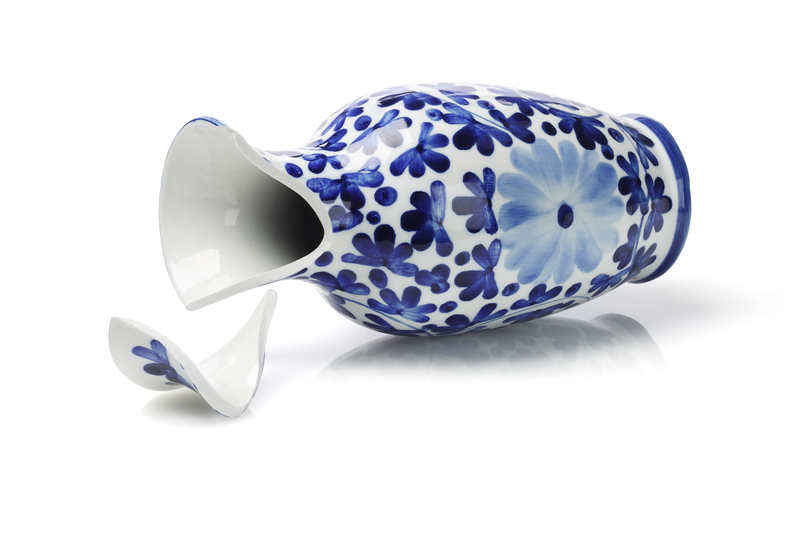How to Move Your Bed and Mattress by Yourself Safely
Moving your bed and mattress can feel like an intimidating challenge, especially if you're handling the task solo. Yet, with careful planning, the right tools, and smart lifting techniques, you can safely move your mattress and bed without assistance. This comprehensive guide will walk you through every step of the process, ensuring both your safety and the integrity of your bedding furniture.
Why Properly Moving Your Bed and Mattress Is Essential
Before you dive into the details of moving your bed and mattress alone, it's important to understand why careful handling is critical:
- Avoiding Injury: Mattresses and bed frames are often bulky and heavy. Lifting incorrectly can cause straining your back or other injuries.
- Preventing Damage: Mishandling can result in a damaged mattress, broken slats, or scratched surfaces.
- Maintaining Cleanliness: Proper packing keeps your mattress and bed frame clean and protected from dirt during the move.
Whether you're relocating to a new house, shifting rooms, or rearranging furniture, moving a mattress by yourself can be done smoothly by following a few simple yet effective steps.

Step-by-Step Guide: How to Move a Bed and Mattress Yourself
Ready to learn how to move your own mattress and bed frame, even as a solo mover? Let's break down the process into manageable steps:
1. Gather All Moving Tools and Supplies
Preparation is your best ally when moving beds and mattresses by yourself. Collect these essential tools before you begin:
- Mattress Bag: This heavy-duty plastic protector shields your mattress from dust, moisture, and damage.
- Furniture Sliders: Place these under the legs of your bed for easy gliding across floors, reducing strain and avoiding scratches.
- Moving Straps or Ropes: These help stabilize your mattress and bed frame during lifting and transport.
- Dolly or Hand Truck: Especially helpful for heavier bed frames or box springs.
- Basic Tools: Screwdrivers, Allen wrenches, or pliers for disassembling and assembling bed parts.
- Packing Tape: For sealing mattress bags and bundling loose bed parts.
- Blankets or Bubble Wrap: To cushion corners and delicate surfaces of your bed frame.
- Work Gloves: Protect hands from scrapes and offer a better grip.
2. Disassemble Your Bed Frame
To move a bed safely by yourself, it's almost always best to take it apart:
- Remove pillows, bedding, and accessories, then set them aside for packing later.
- Carefully lift the mattress off and set it up against a wall.
- If your bed has a box spring or foundation, remove it as well.
- Use the appropriate tools to unscrew the headboard, footboard, and each bed rail. Keep all bolts, nuts, and washers together in a labeled plastic bag.
- If your bed frame is particularly large or heavy, disassemble it further if possible, separating it into smaller, manageable parts.
Pro Tip: Snap a photo of the bed frame before disassembly. This gives you a handy reference for reassembling later.
3. Pack the Mattress Correctly
A mattress is a major investment, so protecting your mattress during a move should be a priority:
- Slide the entire mattress into a heavy-duty mattress bag for protection. Seal the top with packing tape.
- For memory foam or latex mattresses, avoid bending or folding, as this can cause permanent damage.
- Do not drag the mattress across floors--this may tear the fabric or stitching.
Tip: If you have a large home, measure doorways and tight spaces ahead of time to plan the smoothest route.
4. Use Proper Lifting and Carrying Techniques
When moving your mattress and bed frame alone, proper lifting technique is crucial. Follow these safety guidelines:
- Lift with your legs, not your back: Bend your knees and keep your back straight.
- Keep the object close: Holding items close to your body reduces strain.
- Don't twist: Turn your whole body rather than twisting your torso.
- Take your time: Rushing increases your risk of accidental drops or injury.
- Request help for tricky maneuvers: For stairs or uneven ground, ask a neighbor or friend to spot you if possible.
5. Moving the Mattress: Techniques for Solo Movers
Ready to move the mattress by yourself? Here's how:
- Use a Dolly: Stand the mattress up on its side on a dolly or flat hand truck. Strap it securely to avoid falls.
- Slide with Furniture Sliders: Place sliders under the mattress and gently push it across the floor to your destination.
- "Taco" Fold (if allowed by manufacturer): For flexible foam mattresses, you may carefully fold the mattress in half and tie it (check manufacturer instructions first).
- Drag Carefully (For Short Distances): Encase the mattress in the plastic bag and gently pull from one end, making sure to avoid snagging.
6. Move the Bed Frame Pieces
Take lightweight pieces one at a time. For heavy headboards and rails:
- Cushion the edges and corners with moving blankets or bubble wrap.
- Use the dolly if pieces are bulky or if you're navigating stairs.
- Stack pieces safely during transit to prevent shifting and damage.
7. Load Items Into Your Vehicle Safely
Whether you're using a car, van, or rental truck, loading your bed and mattress for transport is a key step:
- Mattress: Place along the side of the vehicle or lay it flat on top of other items. Secure tightly with ratchet straps or ropes to prevent shifting.
- Bed Frame: Lay flatter pieces on the floor, with cushioned gaps between them. Stand vertical elements upright and secure them as well.
- Double-check that all hardware and tools are in a labeled bag and not left behind.
8. Unload and Reassemble with Care
Upon arrival:
- Unpack the mattress, inspect for damage or dirt, and air out if needed.
- Place sliders under bed frame parts and gently move them to the desired room.
- Follow your reference photo (or instructions) to reassemble the bed frame using saved hardware.
- Remove the plastic mattress bag right before placing it on the bed frame to keep it clean.
Extra Tips for a Smooth Solo Bed and Mattress Move
- Plan your route in advance. Measure hallways, doorways, and staircase turns to ensure everything will fit through easily.
- Protect floors and walls. Use old sheets or cardboard to cover delicate surfaces on moving day.
- Wear supportive shoes and comfortable clothing for ease of movement and grip.
- Don't move beyond your limits. Know when to pause and ask for help, even if just for a tricky step or doorway.
Common Challenges When Moving Beds and Mattresses Solo--and How To Solve Them
1. Narrow Staircases or Doorways
If your mattress or bed frame is a tight fit:
- Try rotating the mattress upright or at an angle.
- Remove doors from hinges for extra clearance.
- Disassemble the frame as much as possible.
2. Heavier Mattresses (King or Queen Size)
Larger mattresses can weigh up to 150 pounds or more. For these:
- Use moving straps for better leverage.
- Move one side at a time, pivoting the mattress carefully.
- Consider hiring help for heavy or unwieldy items.
3. Lack of Vehicle Space
If your moving vehicle is too small for a full-size mattress:
- Consider renting a van or pickup truck.
- Transport the mattress on the roof (well-secured and wrapped), but check your local traffic laws first.
How to Move a Mattress and Bed Frame Upstairs or Downstairs By Yourself
Stairs add an extra layer of difficulty to solo mattress moving. Here are some strategies:
- Place cardboard or rugs along stairs to prevent nicks and aid sliding.
- Stand the mattress on its side in a vertical position and guide it slowly up or down each step.
- Take frequent breaks--never rush on stairs.
- If using a hand truck, strap the mattress tightly and tilt backward to roll it up or down with control.
Sustainable Moving: Reusing and Recycling Packing Materials
Looking to move your bed and mattress sustainably?
- Reuse mattress bags and furniture blankets for future moves or donations.
- Recycle cardboard and plastics after unpacking.
- Donate unwanted bedding or frames to local charities instead of discarding.

Frequently Asked Questions About Moving Beds and Mattresses By Yourself
Can I fold my mattress to make it easier to transport?
It depends on the type: Many foam mattresses can be carefully folded or rolled, but spring and hybrid mattresses should stay flat. Always check your manufacturer's recommendations to protect your mattress during moves.
How do I move a bed and mattress safely if I have back problems?
If you have pre-existing health concerns, avoid lifting heavy objects without assistance. Use dollies, sliders, or movers wherever possible. Don't hesitate to ask for help or hire a professional moving service.
Is it OK to transport a mattress on top of my car?
Yes, but it comes with risks and legal considerations. Make sure the mattress is tightly wrapped and secured with strong ropes or tie-down straps. Always check your local laws regarding oversized loads, and don't exceed your vehicle's weight or roof capacity.
How long does it take to move a bed and mattress by myself?
Plan for at least one to three hours for the process, depending on the size of the bed, the layout of your home, and travel distance.
Conclusion: You Can Move Your Bed and Mattress by Yourself--Safely and Efficiently
Learning how to move a bed and mattress by yourself safely empowers you to take control of your move--and can save money on professional movers. With the right supplies, careful planning, and attention to technique, you can protect your health and your furniture every step of the way.
Whether shifting rooms or relocating entirely, follow this guide to enjoy a smooth, safe, and successful move. If you do run into a challenge, remember: it's always okay to pause, reassess, and ask for help for a truly stress-free moving experience!
Ready to move your mattress and bed by yourself? Keep this guide handy and approach each step with patience and confidence. Your bed--and your back--will thank you!



